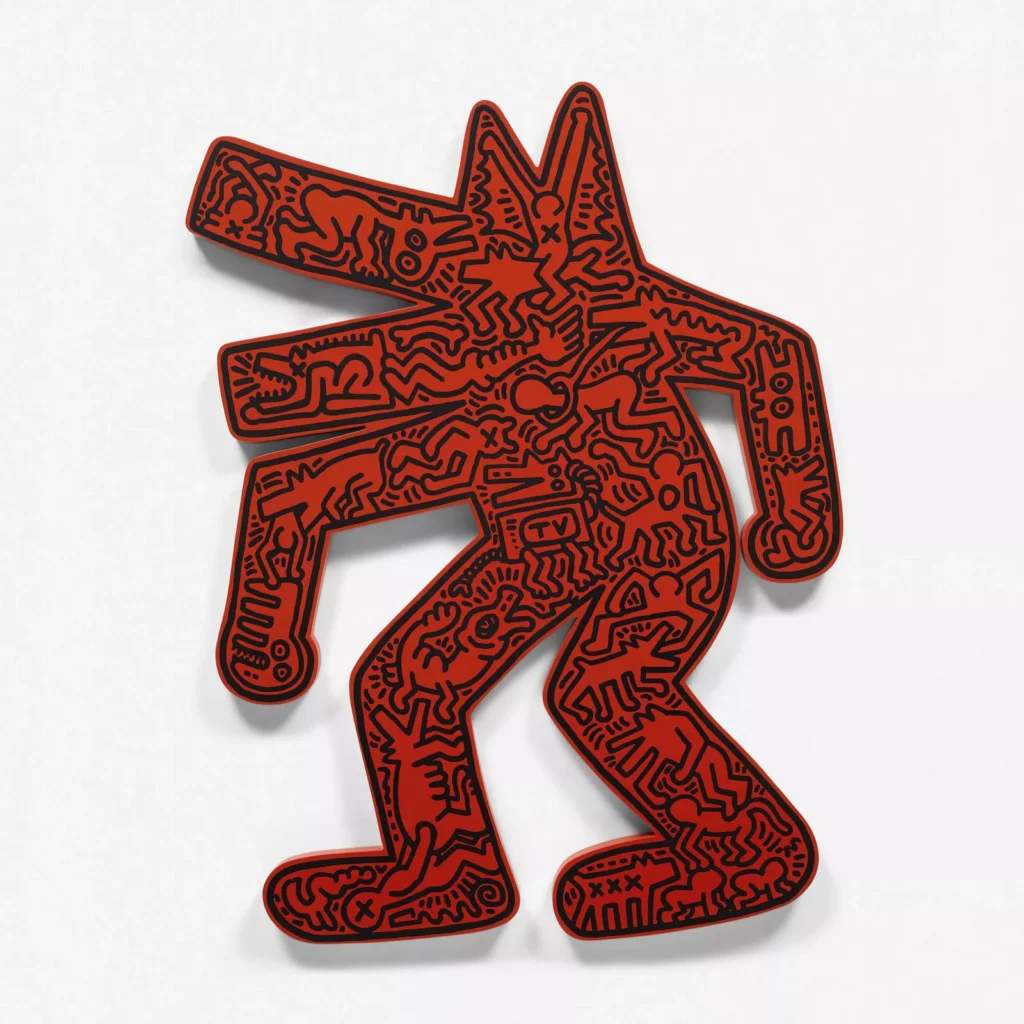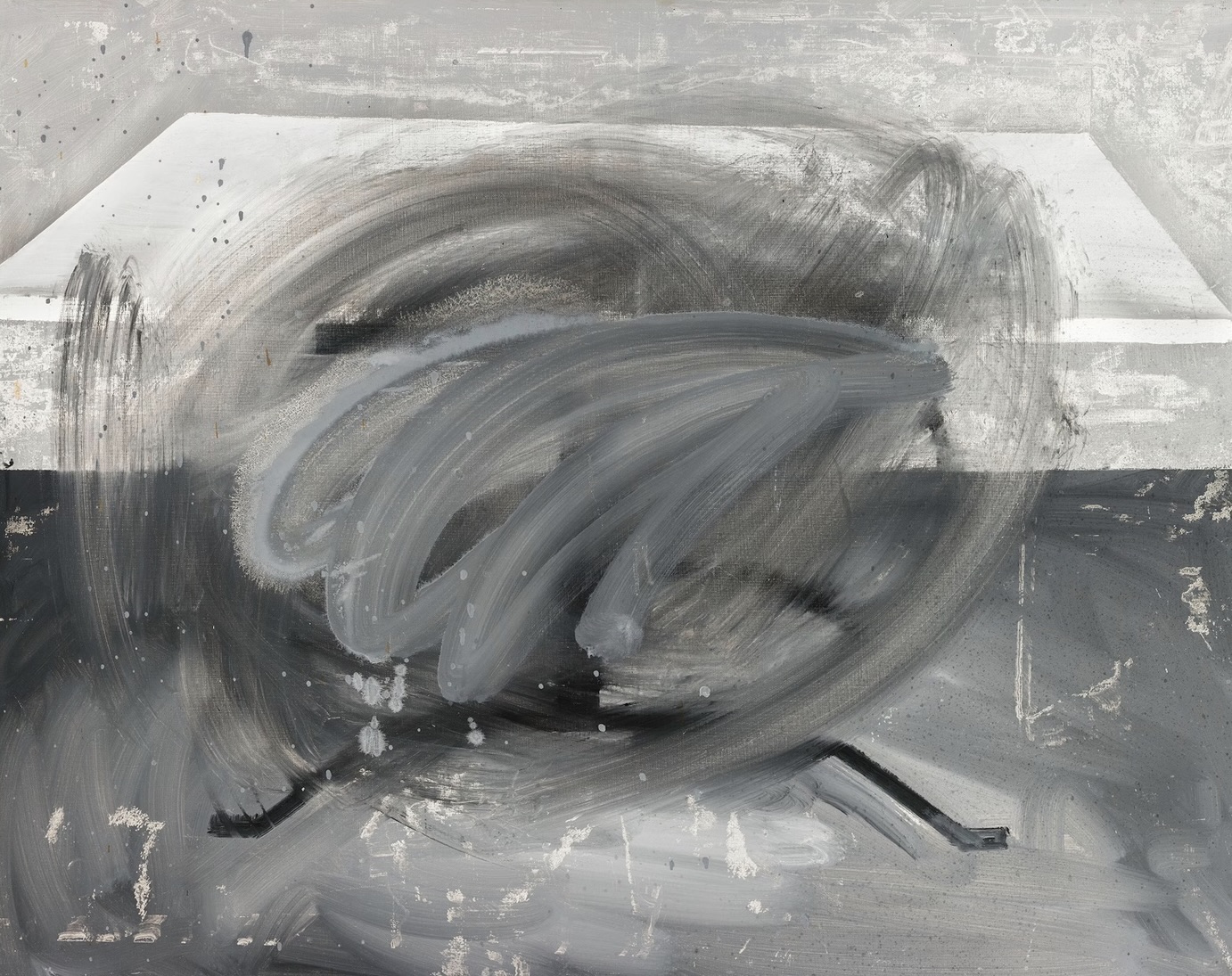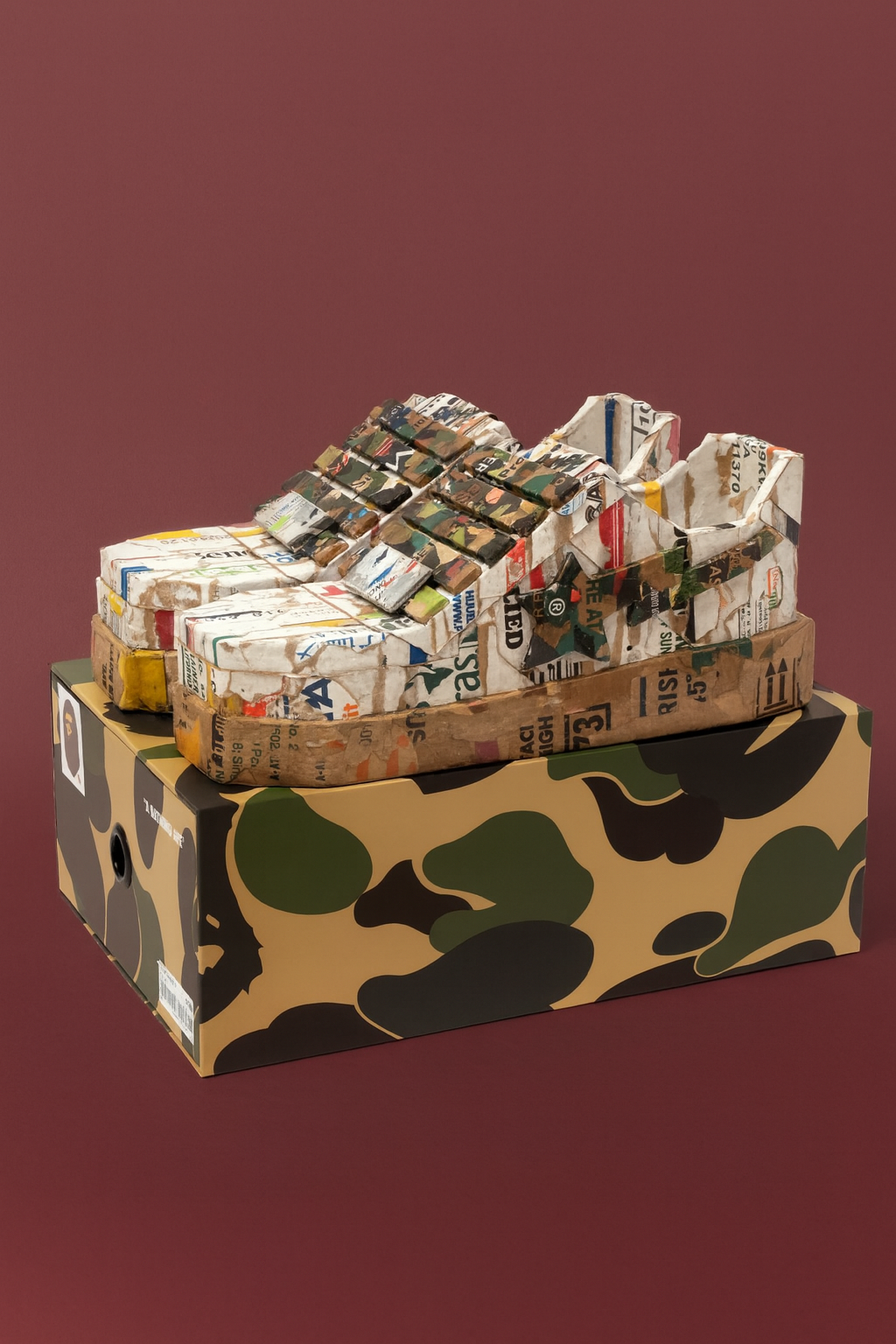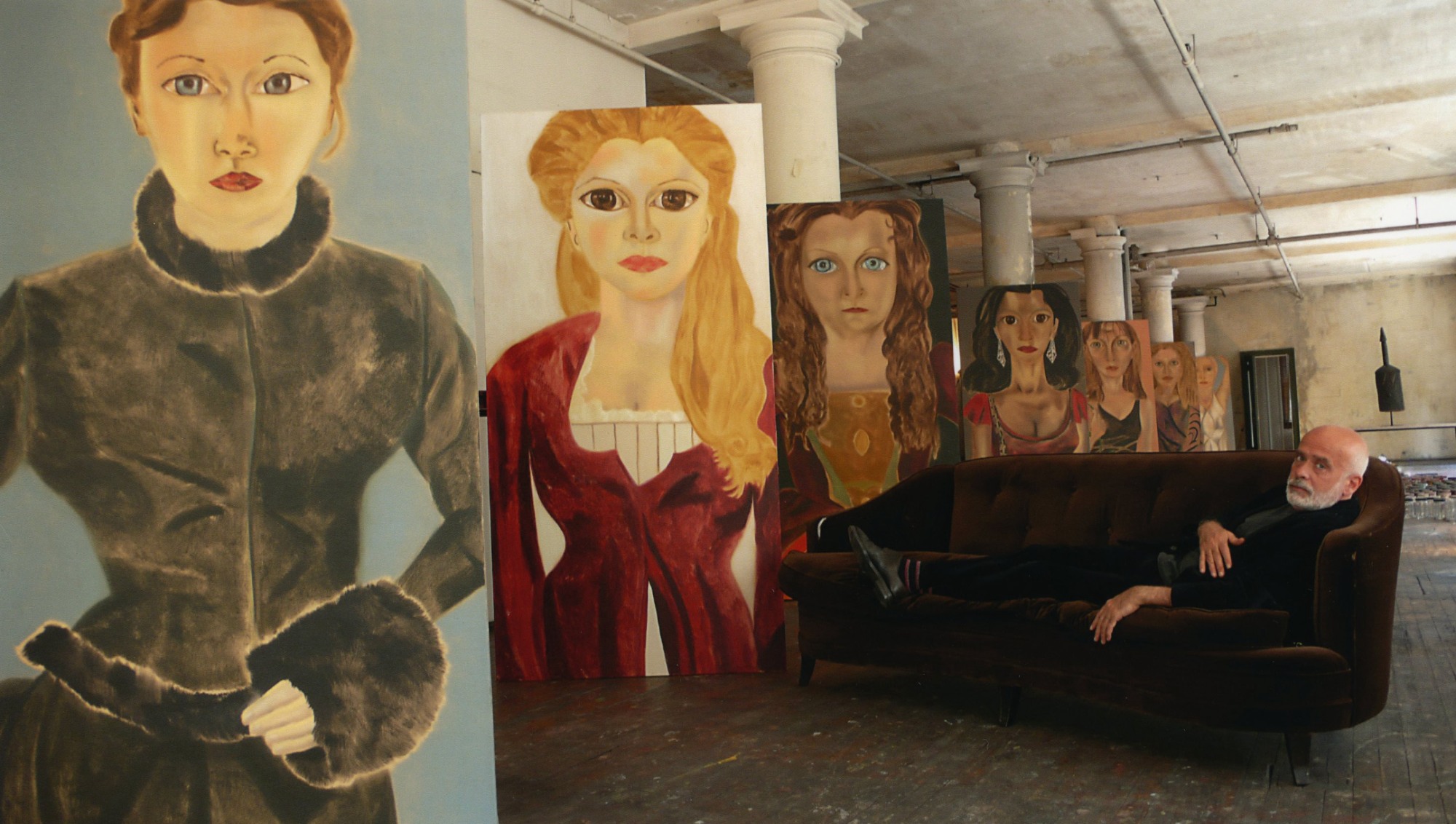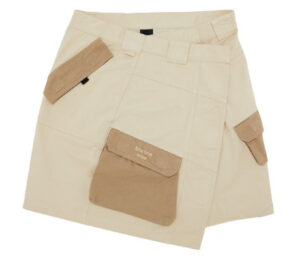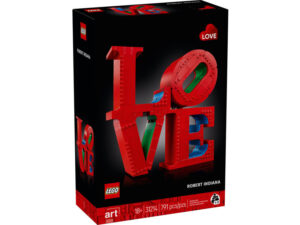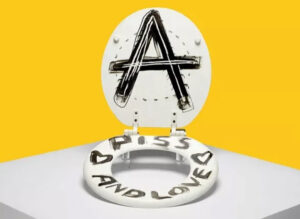Few artists have managed to distill the frenetic rhythm of 1980s New York into a vocabulary as immediately recognizable as Keith Haring. Working between subway platforms, street corners, and SoHo galleries, Haring developed an image-based lexicon that merged the accessibility of graffiti with the graphic precision of Pop art. Among his recurring figures — radiant babies, dancing silhouettes, flying saucers — the barking dog stands out as one of his most potent visual archetypes.
Created in 1986, Dog is not merely a painting or print but a sculptural multiple: a screenprint in black ink on red enamel-painted plywood, its shape cut to the form of a barking canine. The piece sits at the crossroads of street art and object design, merging painting with industrial fabrication. Haring’s “dog” functions simultaneously as icon, mascot, and moral alarm — a creature barking at the chaos of late-Reagan America.
material
Unlike Haring’s subway chalk drawings or mural-scale compositions, Dog operates in the round. The shaped plywoodform gives the work an immediate physicality: it occupies space like signage, recalling advertising boards or public warnings. The red enamel surface, glossy and industrial, departs from the porous tactility of canvas or paper. Red — the color of urgency, danger, and attention — becomes the perfect backdrop for Haring’s thick black lines.
Screenprinting on wood was an unusual choice in Haring’s oeuvre, yet it echoed the production methods of commercial display. The flatness of the color field enhances the graphic boldness of the dog’s bark lines radiating from its mouth — those short linear bursts that, in Haring’s pictorial syntax, signal sound, energy, or alarm. By shaping the support to match the outline of the figure, Haring blurred the boundary between image and object, effectively turning a drawn symbol into a standalone sculptural sign.
In this sense, Dog aligns with the Pop tradition of Claes Oldenburg’s store objects or Robert Indiana’s “LOVE” sculptures. Yet where Pop celebrated consumer language, Haring re-routed it into a form of civic communication. His dog doesn’t advertise; it warns.
idea
Haring’s dogs are far from innocent pets. They are watchdogs, guard dogs, and occasionally, predators. In earlier drawings, the dog often appears barking at a crawling baby or confronting an authoritarian figure. Scholars have read these juxtapositions as metaphors for power, resistance, and control — a visual theatre of urban hierarchies.
The barking dog in Haring’s iconography frequently functions as an alarm of conscience. It represents both vigilance and violence, both protest and propaganda. In Dog (1986), the creature stands alone, barking into the void — no adversary in sight. Its bark, then, becomes existential: a pure signal, an open transmission into a world saturated by media noise.
This ambiguity aligns with Haring’s understanding of symbols as mutable social code. He often remarked that his images could “mean different things to different people,” depending on the context in which they were seen — a philosophy rooted in semiotics and street culture alike. The dog might be a protector in one mural, a censor in another, a corporate enforcer in a third. In the 1986 Dog, that uncertainty remains central to its power.
new york, 1986 – the streets as studio
By the mid-1980s, Haring was at the height of his fame. His work had moved from subway walls to international galleries, yet he retained a commitment to accessibility. The year 1986 also marked his most prolific period in public projects — from the Crack Is Wack mural in Harlem to collaborations with Grace Jones, Vivienne Westwood, and LA II.
New York was at a boiling point. The AIDS epidemic was ravaging downtown communities, Reaganomics deepened inequality, and graffiti culture was under siege from city cleanup campaigns. Amid this climate, Haring’s imagery became a kind of moral cartography — charting love, fear, and survival through line and color. The barking dog, in this moment, functioned like a siren.
Dog (1986) thus reads as both celebration and outcry. Its red ground mirrors the alarm of a city bleeding vibrancy and violence in equal measure. The plywood surface, reminiscent of boarded-up storefronts, evokes the makeshift textures of the urban landscape Haring inhabited. By choosing such materials, Haring embedded the work in the very fabric of New York’s visual noise.
activism
Haring’s art was inseparable from activism. His dogs often stood in for the voice of protest — barking at injustice, barking at political silence. In a decade marked by government inaction toward AIDS and widening cultural divides, Haring’s symbols became civic voices.
The dog motif can be read as a metaphor for speaking truth to power. The very act of barking — loud, repetitive, public — mirrors Haring’s approach to visibility. He barked through walls, billboards, and subway panels, democratizing art by making it omnipresent.
In interviews, Haring described his desire for “art that communicates to everyone.” The barking dog achieved precisely that — an icon simple enough for a child to recognize yet charged enough to embody protest. The 1986 plywood piece amplified that communication through objecthood: it could stand, literally, in public space as both artwork and message.
As art historian Elizabeth Sussman later noted, Haring’s iconography “collapsed the boundaries between commercial and moral language.” Dog stands as a perfect emblem of that collapse: it looks like an advertisement but delivers a conscience.
graphic
Haring’s signature aesthetic — bold outlines, flat colors, rhythmic repetition — derived from his study of semiotics, animation, and street signage. In Dog, the economy of line is absolute. Every stroke serves a communicative purpose: the thick contour defines the body, while the short radiating dashes perform sound.
This formal rhythm is musical, almost percussive. One can sense the tempo of 1980s New York in the image — hip-hop beats, subway brakes, the chatter of downtown clubs. The dog’s bark could easily syncopate with the city’s soundtrack.
That dynamic visual rhythm also connects Haring to contemporaries like Jean-Michel Basquiat, whose frenetic mark-making spoke the same urban dialect but in a more chaotic register. Where Basquiat’s language was linguistic and fractured, Haring’s was geometric and universal. The dog, as sign, achieves a level of clarity that feels prehistoric and futuristic at once.
edition
The 1986 Dog is described as a “unique multiple” — a paradoxical term that encapsulates Haring’s democratic ethos. A multiple is by definition reproducible, yet each example in this series was individually finished, blurring the line between mass production and singular authorship.
This hybrid model allowed Haring to merge the Pop art fascination with replication (Warhol’s silkscreens) with his street sensibility of improvisation. The shaped plywood panels, though uniform in outline, carried subtle variations in paint texture and finish, ensuring each one retained individuality.
By producing Dog as a multiple, Haring also democratized ownership. Collectors could acquire a piece of his vocabulary without the prohibitive prices of unique canvases. In doing so, he subverted the exclusivity of the art market — a gesture consistent with his belief that “art is for everybody.”
symbol
In Haring’s symbolic lexicon, animals often act as proxies for human behavior. Dogs, in particular, embody primal energy — loyalty, aggression, instinct. In semiotic terms, the barking dog functions as an indexical sign: it doesn’t depict sound; it signals its presence through graphic motion lines.
The simplicity of the figure belies its complexity. The open mouth and radiating strokes perform language without words. It’s a form of visual onomatopoeia, transforming noise into image. That transformation captures Haring’s gift for bridging the sensory gap between sound, sight, and movement.
From a psychoanalytic perspective, one could argue that Haring’s dog symbolizes the id — pure impulse, stripped of social filter. Its bark disrupts order, challenges authority, and insists on presence. In the urban theatre of the 1980s, that was a radical act.
Impression
Keith Haring’s Dog (1986) encapsulates everything that made his practice revolutionary: formal clarity, social urgency, and unpretentious communication. Rendered in screenprint on red enamel-painted plywood, it collapses distinctions between painting and signage, gallery and street, Pop and protest.
Nearly four decades later, the dog still barks. Its voice echoes through design, activism, and youth culture — a persistent reminder that art can be both playful and political, both local and universal.
In an age saturated with visual noise, Haring’s dog cuts through with startling simplicity. It reminds us that clarity itself can be radical — that a line, when drawn with conviction, can still shake the walls of complacency.
No comments yet.

